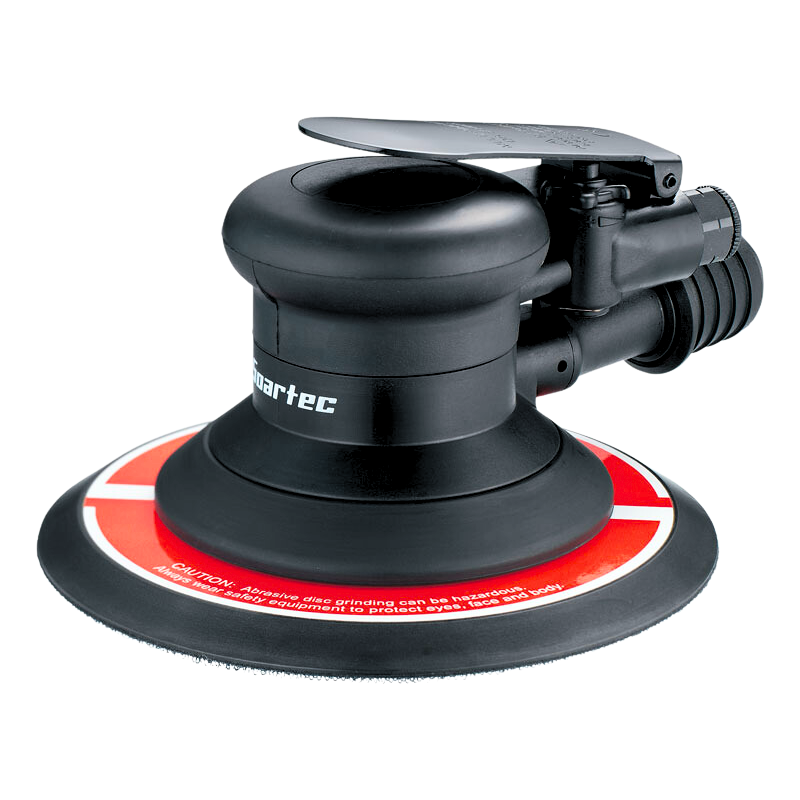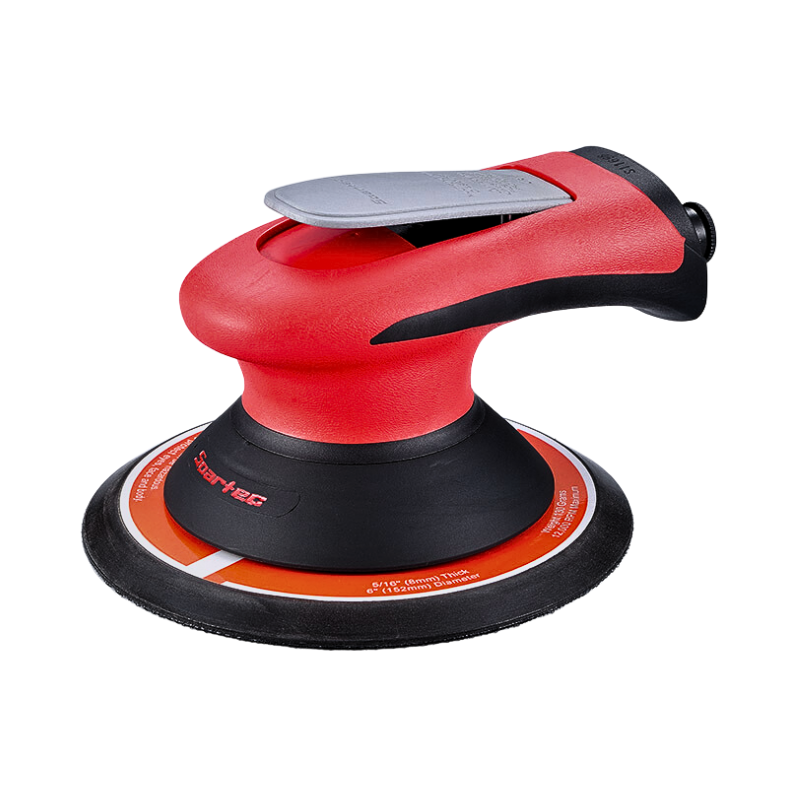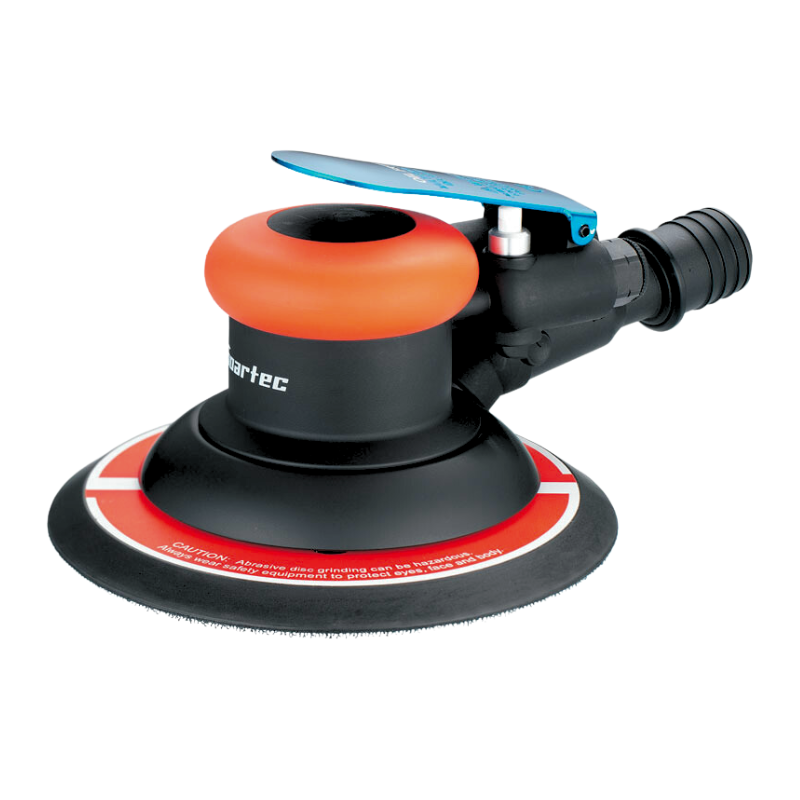
In the realm of woodworking and surface finishing, the choice of tools plays a pivotal role in achieving high-quality results and operational efficiency. Among the plethora of options available, the random orbital palm sander stands out for its exceptional blend of power, precision, and ergonomic design. Specifically, models equipped with dust extraction systems, such as those featuring central vacuum, self-vacuum, or non-vacuum capabilities, have significantly improved the sanding process by reducing airborne dust and providing a cleaner work environment. Such advancements have made the random orbital palm sander, especially the 6-inch pad face with hook/vinyl specifications, a favored choice among professionals seeking the best outcomes with minimal clean-up.
This article delves into the top random orbital palm sanders with dust extraction, offering a comparative analysis of features including air inlet size, free speed, and air consumption, among others. Emphasis will be placed on models that promise oil-free operation and those requiring oil daily, delineating their respective merits in terms of usage and maintenance. Through a detailed examination of user experiences and performance evaluations, we aim to guide readers toward making an informed decision on the best random orbital palm sander to suit their specific needs. Ultimately, the conclusion will highlight the superior choice, taking into account factors such as efficiency, durability, and the quality of dust collection systems, to assist in optimizing both productivity and health standards in the workplace.
Top Random Orbital Palm Sanders with Dust Extraction
Professionals in woodworking and surface finishing often seek tools that combine efficiency with effective dust management. Among the top contenders are the random orbital palm sanders with advanced dust extraction features, which not only enhance the quality of the work but also significantly reduce cleanup time and increase the tool’s lifespan.
Product 1: Model WS-101PF-6H
This model is renowned for its robust performance and ergonomic design. It operates with a free speed of 12,000 rpm and an air consumption of 16.5 cfm, ensuring efficient material removal. The vacuum mode is a versatile 3-in-1 system, adaptable to various workplace settings. Weighing only 1.90 lbs, it offers a minimal orbital diameter of 2.5 mm, which is ideal for detailed and precision work.

Product 2: Model WS-120NF-6H
This model stands out for its oil-free operation, ensuring a cleaner work environment and reducing maintenance requirements. It features a patented pin-less design for enhanced comfort and dual-material coating for reduced vibration and better temperature insulation. The fully open dust collection hole optimizes dust extraction efficiency, crucial for prolonged operations.

Product 3: Model WS-1051SF-6H
The WS-1051SF-6H excels in self-vacuum dust extraction, making it a top choice for environments where external dust extraction setups are not feasible. It maintains a free speed of 12,000 rpm and operates quietly at 93 db(A), minimizing noise pollution. The model’s design includes a high sensitivity lever for precise speed adjustments and a low-pressure start, enhancing the overall usability and effectiveness in dust-prone tasks.

Each of these models is equipped with features tailored to specific needs and environments, from lightweight, precision-focused designs to robust, self-contained dust extraction systems. Their advanced specifications promise a blend of performance, comfort, and cleanliness, making them ideal choices for professionals prioritizing efficiency and health in their sanding operations.
Comparative Analysis of Features
Pad Face and Vacuum Modes
The random orbital palm sanders under review offer a variety of pad faces, predominantly featuring hook/vinyl types that are well-suited for industrial and professional use. Notably, models like the WS-105 Series and WS-1051 Series integrate advanced vacuum modes—central and self-vacuum respectively. These systems not only enhance dust extraction but also adapt seamlessly to different environmental conditions, ensuring cleaner operations and prolonged tool life.
Air Consumption and Noise Levels
Air consumption rates for these sanders are consistent at 14.1 cfm, which requires a robust compressed air system. The WS-105 Series operates quietly at 78 db(A), making it suitable for environments where noise reduction is critical. In contrast, the WS-1051 Series registers at 93 db(A), indicating a higher noise level that may impact user comfort during extended use.
Speed and Stability
Both the WS-105 and WS-1051 Series boast a free speed of 12,000 rpm, optimizing material removal rates and operational efficiency. Stability is a key feature, with the design minimizing vibrations and ensuring smooth operation across various surfaces. This stability is crucial for maintaining the quality of the finish, particularly when dealing with intricate or detailed work.
Dust Collection Efficiency
Effective dust collection is paramount, and both models demonstrate considerable efficiency in this regard. The WS-105 Series, with its central vacuum system, excels in environments already equipped with external dust extraction facilities. Meanwhile, the WS-1051 Series shines with its self-contained dust extraction, ideal for situations where external systems are not feasible. Both models ensure a safer work environment by minimizing airborne dust and reducing the risk of inhalation.
User Experience and Performance
Comfort and Handling
Users have noted that some random orbital palm sanders can have sharp plastic edges on the grip positions, which may cause discomfort during extended use. Efforts to sand down these edges have significantly improved ergonomics, providing a more comfortable handling experience. Additionally, the power switch design is critical; models with well-designed switches enhance user comfort and reduce fatigue during prolonged operations.
Durability and Reliability
Feedback indicates a mixed experience regarding the durability and reliability of certain models. While some previous models of Porter-Cable sanders were praised for their robust construction and long-term service, newer models have shown a decline in fit and finish, leading to user dissatisfaction. However, other brands like HIT T105 have been recognized for their sturdy build and reliability, ensuring they serve well over extended periods.
Operational Efficiency
Operational efficiency is greatly impacted by the dust extraction capabilities of the sander. Users have found that removing restrictive dust collection rings under the pad significantly enhances the sander’s power. Moreover, advancements in dust bag design, like those featuring an internal spring, have improved the functionality and efficiency of dust collection, contributing positively to the tool’s overall performance.
Feedback and Reviews
Reviews from long-time users of brands like Porter-Cable reflect a decrease in satisfaction with recent models due to issues in quality control, such as poor dust collection and uncomfortable grips. However, when modifications are made, such as improving the ergonomics manually, the user experience enhances significantly. On the other hand, brands that continuously innovate and improve dust extraction and user comfort receive more favorable feedback, underscoring the importance of these features in user satisfaction.
Conclusion and Best Choice
Through our exploration of the various models of random orbital palm sanders with dust extraction capabilities, we have unearthed key insights that drive the decision-making process for professionals in the woodworking and surface finishing industries. Highlighting models like the WS-105 Series and WS-1051 Series has not only revealed the integral features such as pad face variety, air consumption rates, and dust extraction efficiency, but also underscored the importance of ergonomic design and operational efficacy. By comparing these products, we have endeavored to offer readers a comprehensive understanding of what to look for in a sander that meets both their quality standards and health considerations in the workplace, showcasing the pivotal role of advanced dust extraction in maintaining a clean and safe working environment.
The discussion on models equipped with features like oil-free operation, high free speed, and low noise levels, particularly the WS-105 Series and WS-1051 Series, confirms the evolution of sanding tools towards more user-friendly and environmentally conscious designs. Such advancements not only promise an enhancement in the quality of work but also contribute significantly to user satisfaction and workplace safety. As the industry continues to evolve, the significance of choosing the right equipment, one that harmonizes efficiency with health, cannot be overstated. It is our hope that this article assists professionals in making an informed selection, one that not only elevates their work quality but also safeguards their well-being.
FAQs
1. Which orbital sander is renowned for its superior dust collection capabilities?
The top random orbital sanders of 2024 include the DeWalt DWE6421K as the best overall, the Porter Cable 382 recognized for its exceptional dust collection, the Bosch ROS20VSC known for its smooth performance, along with the Milwaukee 6034-21 and the Makita BO5041K.
2. What makes a random orbital sander a better choice compared to a palm sander?
Random orbital sanders are preferred for their ability to produce a finer, more even finish compared to palm sanders. Although palm sanders are good for finishing tasks, they often require multiple passes to achieve a similar quality of finish.
3. What are the benefits of using a random orbital sander?
A random orbital sander is distinguished by its unique sanding action, which uses a randomized motion. This helps to significantly minimize the appearance of swirl marks on the workpiece, a common problem with traditional orbital sanders.
4. What are the optimal uses for a random orbital sander?
Random orbital sanders are excellent for rapid sanding applications. They are effective on various surfaces, including rough metal, wood, or plastic, and can be used for removing paint or rust. These sanders perform best on flat surfaces and should be applied with consistent pressure across the pad.

